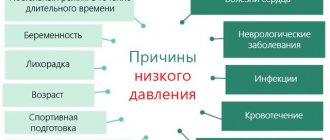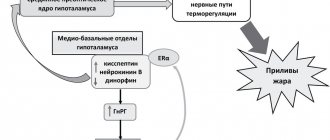Heart murmurs
- an acoustic phenomenon associated with changes in blood flow in the heart and blood vessels. There is a point of view according to which heart murmurs are a problem exclusively for children. Indeed, about 90% of functional noise is found in children and adolescents. However, scientific experts have revealed a fairly wide prevalence of heart murmurs (about 77%) in young people aged 20 to 28 years.
Most cardiologists agree that in adults, the presence of a heart murmur clearly indicates some kind of cardiac pathology and is a reason for a complete cardiac examination.
Is it dangerous for an adult?
Functional murmur is not dangerous, since when its cause is eliminated, it stops being heard without additional treatment, and no pathological changes remain in the heart .
The consequences of organic noise directly depend on the severity of damage to the valve apparatus and heart muscle, as well as on the time of onset and rate of progression of heart failure. When this complication occurs, the patient’s condition worsens significantly, and the prognosis for life and recovery is determined by the timeliness of treatment started. If there are heart defects and there is no effect from the use of medications, surgical treatment of the factor that caused the heart murmur is required.
How are noises classified?
Classification divides all noise according to different criteria.
In relation to health:
- organic - against the background of changes in the structure and functioning of the heart, depending on the disease;
- functional - temporary, not associated with any serious pathology.
By time of appearance:
- congenital - more often detected in childhood, associated with defects;
- acquired - heard against the background of acute and chronic diseases.
According to a specific anatomical change in the structure of the heart (the name of the defect).
In relation to origin:
- intracardiac - caused by the development of defects;
- extracardiac - associated with inflammation of the pleura, pericardium.
What is a heart murmur?
A heart murmur refers to the presence of additional murmur detected during auscultation of the heart (the typical murmur that is always present is represented by two heart tones), which may be associated with a change in the level of:
- heart valves: tricuspid and mitral, pulmonary and aortic;
- left and right ventricular chambers;
- large vessels: aorta and pulmonary artery.
Although the presence of a murmur is often of no pathological significance, in some patients it can mask quite serious heart problems.
Heart murmurs can be divided mainly into:
- Benign murmurs, also called innocent murmurs: usually present in healthy children.
- Pathological murmurs: in children they are caused by congenital heart defects, and in adults - for various reasons, including disruption of the valve apparatus.
Heart murmurs are diagnosed by a doctor through auscultation of the chest during an objective examination; the diagnosis is then completed by some instrumental studies such as echocardiography .
- Benign murmurs have a good prognosis, do not require any treatment, do not cause any symptoms, and do not limit physical activity.
- For malignant murmurs, the prognosis will depend on the underlying cause, its severity, and the possibility of treatment.
A little anatomy of the heart
The heart is a muscular organ located in the mediastinum, in the center of the chest. The heart in the body essentially serves as a “pump” that takes care of collecting oxygenated blood coming from the lungs and then pumping it out to the rest of the body.
The human heart is divided into four chambers:
- right and left atrium,
- right and left ventricle
and is equipped with a valve system consisting of 4 valves:
- What do heart murmurs mean in a newborn and a child over 1 year old: causes and treatment regimen
- mitral valve: between the atrium and the left ventricle,
- tricuspid valve, between the atrium and the right ventricle,
- aortic valve: between the left ventricle and the aorta,
- Pulmonary valve: between the right ventricle and the pulmonary artery.
In the so-called "cardiac cycle", deoxygenated blood coming from the periphery enters the right level of the atrium through the inferior and superior vena cava; this blood will be pumped through the right ventricle into the pulmonary artery, which will reach the lungs.
Under what conditions is the patient listened to?
The hearing according to the rules should be carried out:
- in complete silence (sounds from outside are very disturbing);
- the patient is not allowed to talk;
- a device (phonendoscope) is applied to the patient’s skin (they listen through a shirt only in the movies);
- Auscultation of the patient can be performed standing, in a horizontal position, on the left side;
- An experienced doctor will conduct a squat test and listen to the patient again.
It is believed that the threshold for the perception of sound by a doctor falls with fatigue and in old age.
Kinds
There are two types of noise – organic and functional. Below we will consider their characteristic features.
Functional
These noises do not have a negative effect on the human body and are absolutely harmless to health, since once the causes are eliminated, they stop being heard, and the heart does not undergo pathological changes.
They are melodic in timbre, soft, of low intensity, weaken after exercise, do not go beyond the heart, and become louder or quieter when changing body position.
Their appearance can be caused by an increase in the strength of blood circulation or a change in the properties of the blood. It often occurs in pregnant women, at elevated temperatures, or in the presence of thyroid disease.
Organic
These heart murmurs occur due to a heart defect or other disease of the cardiovascular system. Typically, their development is facilitated by a valve defect. They are distinguished by their duration, rigidity, sharpness, and roughness. The sounds become stronger after physical activity and are heard regardless of the position of the body. They can be heard not only in the cardiac region.
- Heart murmurs
Advantages of phonocardiography
The phonocardiography method distinguishes noise much better than the medical ear. It allows you to clearly distinguish between functional and pathological conditions and determine the type of defect. The recording is carried out in complete silence. At the same time, the electrocardiogram line allows you to compare the noise with its relation to the phase of heart contraction.
The amplitude of the curve records the strength and duration. Interesting data on identifying functional changes in the phonocardiogram with a shift in the content of the main electrolytes (potassium, calcium, magnesium) responsible for myocardial contractions.
To find out the causes and consequences of suspected heart diseases, it is necessary to use all available diagnostic methods. This means that in modern conditions of Russian healthcare, auscultation will be important for a long time.
Manifestation during pregnancy
Heart murmurs during pregnancy are a fairly common occurrence. Most often, their appearance is associated with changes in hormonal levels, which is characteristic of this condition, as well as with an increase in blood volume. A woman usually feels a rapid heartbeat, gets tired quickly, and often feels short of breath.
Shortness of breath during pregnancy may indicate a problem with the heart system
Features of noise in some defects and diseases
The diagnosis of heart disease is a serious conclusion for a child and an adult. In order to correctly assess the symptoms of the disease and treat the patient, it is necessary to accurately know the main auscultatory differences and conduct additional diagnostics.
The narrowed mouth of the aorta is distinguished by a rough systolic murmur, sawing, scraping in nature with a low timbre, well conducted through the vessels (can be heard on the carotid artery).
Aortic valve insufficiency is characterized by a soft, diastolic murmur in the form of an “f” sound. It is known that it is better heard in a sleeping patient.
For congenital and acquired defects, a “musical” accompaniment of noise is typical. Listening to a whistling diastolic murmur on the aorta in a patient with septic endocarditis is important in diagnosis. It means perforation of the valves or separation of tendon threads, confirming that the condition is life-threatening for the patient.
Warty growths in endocarditis cause the thin threads of the valves to tear off
When listening to two different systolic murmurs in the heart (at the apex and at the aorta), the doctor can assume the presence of a double defect: stenosis at the mouth of the aorta + mitral valve insufficiency.
A peculiar characteristic is given to noise in congenital patent ductus bollus - “the rumble of a train in a tunnel.”
The friction noise of the pericardial leaves is heard both during systole and diastole, has a “sawing” character, and disappears on inspiration.
Now our path lies in the functional diagnostics room
Electrocardiography (ECG) is a method of graphically recording electrical phenomena occurring in the heart. An ECG is recorded using a special device - an electrocardiograph. In this case, the electrical potentials are amplified 600-700 times and recorded in the form of a curve on a moving tape. ECG recording is carried out using electrodes placed on various parts of the body. Using this method, various disturbances of the rhythm and conduction of the heart, as well as overloads of its various parts, are determined.
The sound characteristics of noise can be assessed not only by simple auscultation, but also using a research method such as phonocardiography (PCG). It is based on graphic recording of sounds accompanying heart contractions. Mainly heart sounds and murmurs are recorded. The resulting image is called a phonocardiogram. It significantly complements auscultation and makes it possible to objectively determine the frequency, shape and duration of sounds, as well as their changes in the process of dynamic observation of the patient. This method is used to diagnose functional murmurs and cardiac malformations. It is also important for rhythm disturbances, when with the help of auscultation alone it is difficult to decide in which phase of the cardiac cycle the sound phenomena occurred. The analysis of phonocardiography and the diagnostic conclusion on it are carried out only by a specialist. In this case, auscultatory data are taken into account. For correct interpretation of PCG, synchronous recording of a phonocardiogram and an electrocardiogram is used. The method is good and absolutely safe, but is currently being replaced by
Echocardiography (EchoCG) is a simple ultrasound examination, only the point of application is the heart. Using this method, you can accurately determine the source of noise or exclude heart disease.
OFFICE OF CARDIOLOGY
| Name of service | Price |
| Initial appointment with a CMN cardiologist, with prescription of treatment, ECG reading/with interpretation | 5000 |
| Initial appointment with a cardiologist | 2200 |
| Repeated appointment with a cardiologist | 3700 |
| Consultation with a cardiologist based on the results of studies and analyzes of third-party organizations | 3000 |
| ABPM - 24-hour blood pressure monitoring | 4600 |
| Health certificate, including consultation | 3700 |
| Holter (24-hour) ECG monitoring | 4500 |
Make an appointment
Diagnostics
If murmurs are detected during listening by a pediatrician, neurologist or cardiologist, then the patient must undergo a comprehensive diagnosis. It includes:
- conducting an electrocardiogram (shows disturbances in the functioning of the heart, for example, disturbances in rhythmic activity or chamber hypertrophy);
- performing radiography (demonstrates the boundaries of the hematopoietic organ and the condition of both lungs);
- carrying out echocardioscopy (ultrasound examination will show the condition of the valves, vessels and cavity of the heart, growths, narrowings and pathologies).
The main task of the doctor is to accurately differentiate the type of eshum. We need to thoroughly understand what is the true reason for their appearance. This will help you not waste time and prevent a serious illness from developing.
You need to remember that even if you listen to noises, but the child does not have any complaints, there is nothing to worry about. Those noises that are accompanied by pallor of the skin, blueness of the nasolabial triangle, shortness of breath and elevated temperature should be alarming. The baby may complain of chest pain, be capricious and refuse to eat. In such a situation, urgent examination and consultation with a specialist is necessary.
How to choose a clinic to visit?
The need for multiple visits to a cardiologist in order to determine the motility of the changes that are occurring requires choosing a medical center in the patient’s area of residence, which simultaneously includes all the required parameters for diagnosing the condition.
Our Help Desk for private clinics in Moscow “Your Doctor” will help you make your choice, the information base of which is systematized and convenient for viewing data, allowing you not only to choose a medical institution, but also to immediately arrange a call to a cardiologist at home or register the time for his visit within the medical center.
This article is posted for educational purposes only and does not constitute scientific material or professional medical advice.










